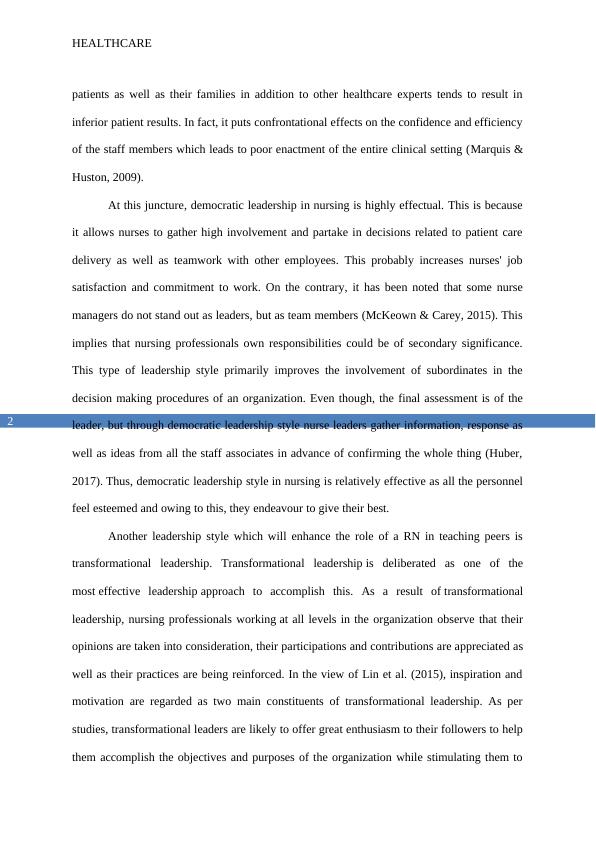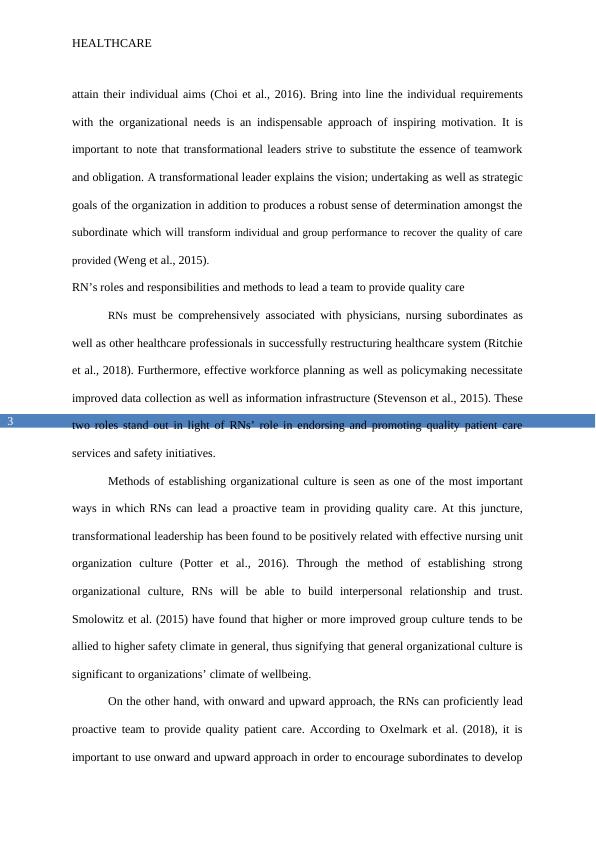Leadership Styles for Nursing Professionals
Analyse and critically discuss the registered nurses responsibilities in leading a team to ensure National Safety and Quality Health Service (NSQHS) standards are met through clinical teaching when providing quality
11 Pages3090 Words21 Views
Added on 2022-08-01
Leadership Styles for Nursing Professionals
Analyse and critically discuss the registered nurses responsibilities in leading a team to ensure National Safety and Quality Health Service (NSQHS) standards are met through clinical teaching when providing quality
Added on 2022-08-01
ShareRelated Documents
End of preview
Want to access all the pages? Upload your documents or become a member.
Why the Role of Nurses Is Important in Healthcare
|11
|568
|20
Communication for Safety
|13
|3004
|24
Teaching Learning And Leadership For Clinical
|10
|2922
|21
Registered Nurse Responsibilities in Leading a Team for NSQHS Standards
|8
|2989
|53
Nursing Leadership: Improving Patient Safety and Outcomes
|8
|2185
|195
Assignment on Transcript Leadership In Clinical Nursing
|5
|1145
|5




